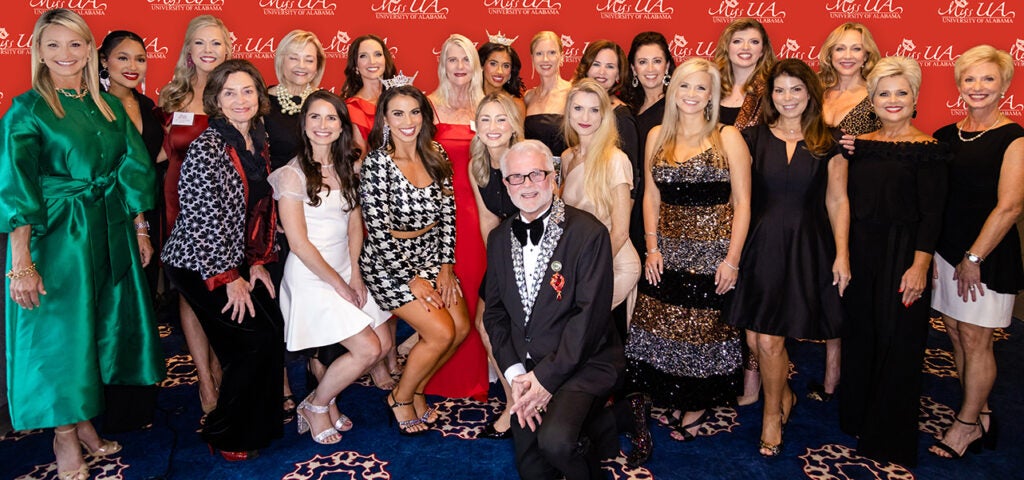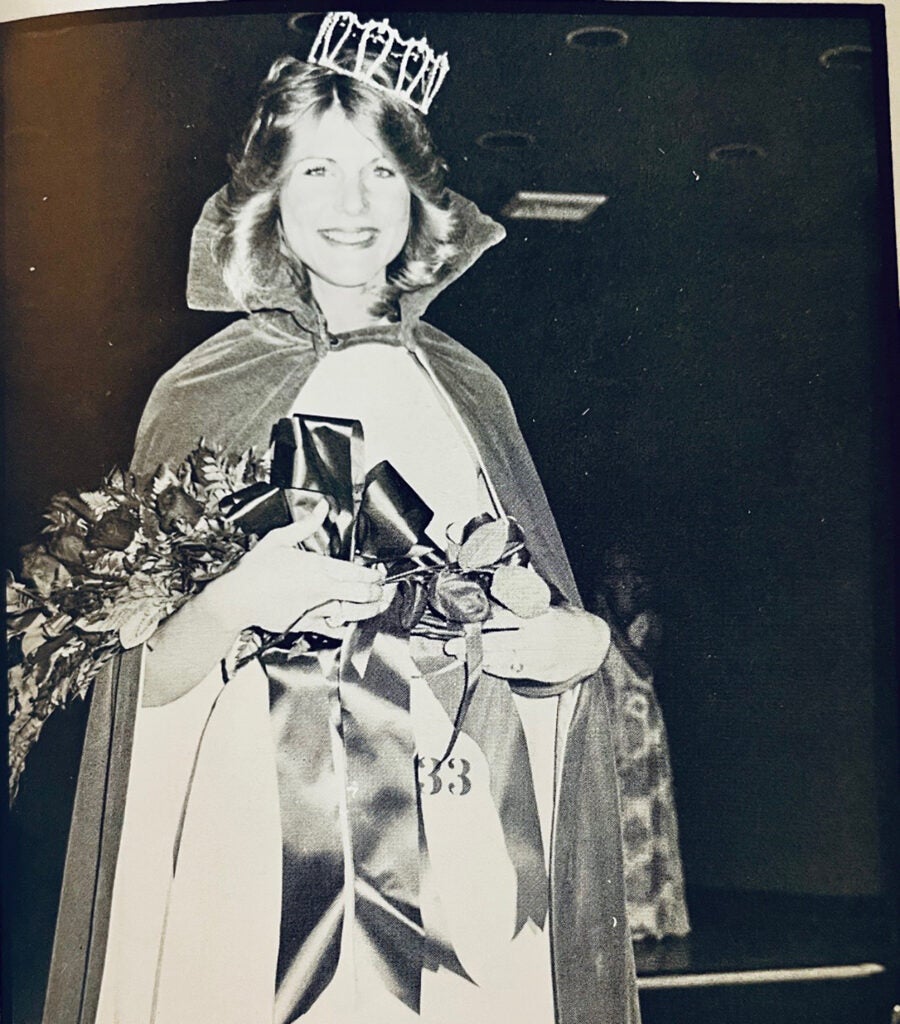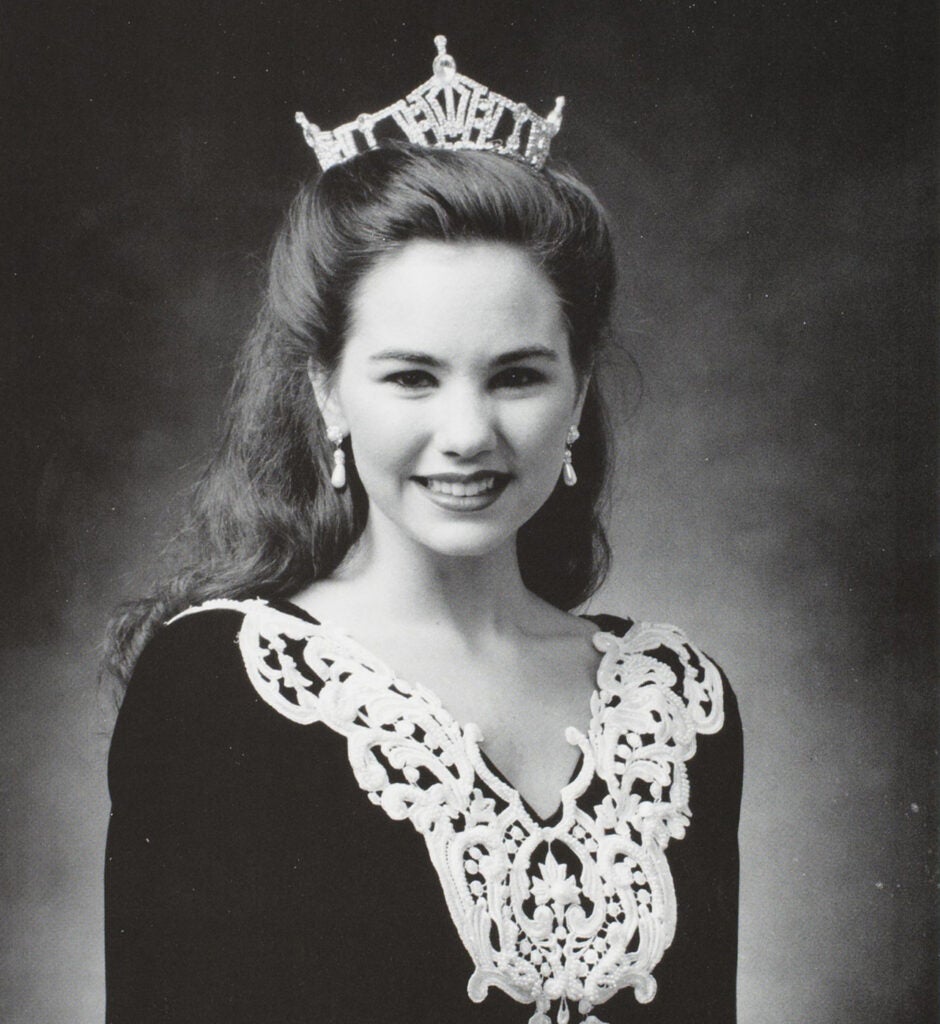
The Miss University of Alabama scholarship program celebrated its 50th year on Sept. 14.
More than 35 former Miss UAs, known as “Forever Miss UAs,” were invited to be recognized at this year’s pageant, where Ruby Tilghman was crowned Miss UA 2025.
Led by a volunteer committee of 10-15 people, the program has grown tremendously from its beginnings. Hundreds of students have competed in its half-century history, with three winners going on to earn the title of Miss Alabama.
But beyond the crown, the program has provided a wealth of opportunities for students to earn scholarships, advance community service projects and represent their school, all while boosting their confidence.
The New Crown in Town
In 1974, then UA spirit committee chairman, Walt James, was watching the Miss Alabama pageant on television and noticed that The University of Alabama wasn’t represented. He learned that a preliminary to Miss Alabama had never been started at UA, so he set out to do that.
James asked Dr. Cathy Randall, the advisor to the spirit committee at the time, if they could create that preliminary. She approved and James became the program’s first director. The first Miss University of Alabama scholarship pageant was set in motion.
In that first year, 1974, the event was held on campus and 39 contestants participated. At 20 years old, Cindy O’Brien McCrory became the very first winner, but with the crown came many surprises.
“[The Miss UA competition] was never on my radar,” she said. “My sorority brought the idea to me and said you should do this.”
It wasn’t until after winning the competition that McCrory learned she was the first Miss UA. She went on to place second runner-up at Miss Alabama.
“Winning the Miss UA title pointed me in the right direction,” she added. “Back then pageants were our NBA, our way out of town.”

Changes Ahead
In 1976, Delta Chi became the sponsor of the Miss UA scholarship pageant when James graduated. The fraternity would hold that sponsorship until 1997, when the Alabama Alumni Association officially took the reins.
“Delta Chi had been running the pageant and back then the scholarship money was just $100, which was fine because that was required by the Miss America organization,” said Carol Wright, director of the Miss University of Alabama scholarship pageant since 1995.
The pageant had always been a preliminary for Miss Alabama and Miss America. Wright wanted to see it become more for the women who earned the title. The winner’s scholarship earnings grew with time.
“I like to say I got $500 and a husband,” joked Beth Stomps Feller, who became Miss UA 1996 as a freshman. Feller and her husband, Matt, met because he was the president of Delta Chi at the time she competed.
“There were only six or seven of us competing and it was held at Central High School,” she added. “My gown was my grandmother’s that she wore to my uncle’s wedding. For my talent I just used my costume from ‘My Fair Lady.’”
Feller went on to become Miss Alabama 1997.

Room to Grow
Thanks to the efforts of Wright, the Miss UA committee of volunteers, and community partners, the Miss UA scholarship pageant now offers the title holder a full year’s scholarship, along with several gifts and services from sponsors.
“Our winner receives the ‘Miss University of Alabama Scholarship’ for one year’s tuition valued at $33,000 for out-of-state students and about $11,000 for in-state winners,” said Wright. “I also took a check to financial aid for designated winners that was almost $10,000 earned from ad sales and scholarship donations from sponsors.”
The winners are not only title holders, but representatives of the University who make appearances all over the state. Miss UAs also travel to share their community service initiative.
“It definitely takes a village. It’s not just me,” said Wright. “It’s a lot of people volunteering their time and connections that make the Miss UA program what it is.”
The Tiara Isn’t the Only Thing that Sparkles
Many of the “Forever Miss UAs” have gone on to careers in the arts, politics, public relations, journalism, medicine and beyond.
Feller said she believes holding the Miss UA title was the catalyst for her being where she is today.
“Miss UA really opened the doors for me in the Miss America system,” she said. “The idea of the program is to empower young women to achieve their dreams. It allowed me to be a trailblazer championing my cause of HIV awareness in Alabama in the 90s. [Being Miss UA] allowed my voice to have an impact.
“It’s a volunteer-run organization and the transferrable skills I learned, the networking opportunities – those are all things I use in my career today.”
McCrory’s own experience as the first Miss UA doesn’t vary much from Feller’s.
“Everywhere I went, people’s eyes lit up when they learned I was Miss University of Alabama and that I was the first. It’s always been in my back pocket, and it gave me a lot of confidence that I could go on to do big things,” she said.
Visit the Miss University of Alabama website to learn more about the program.
Contact
Jennifer Brady, UA Strategic Communications, jennifer.brady@ua.edu
